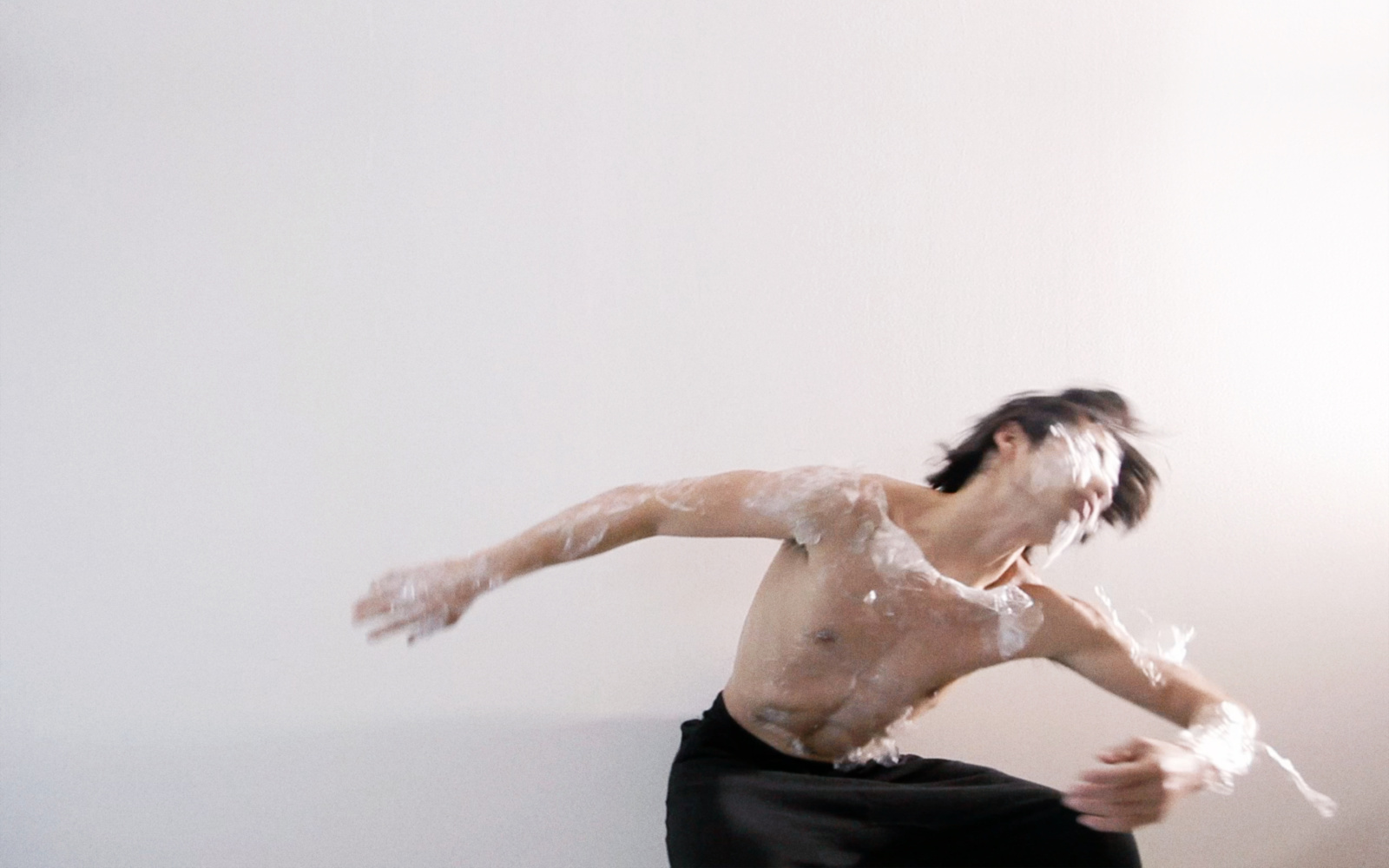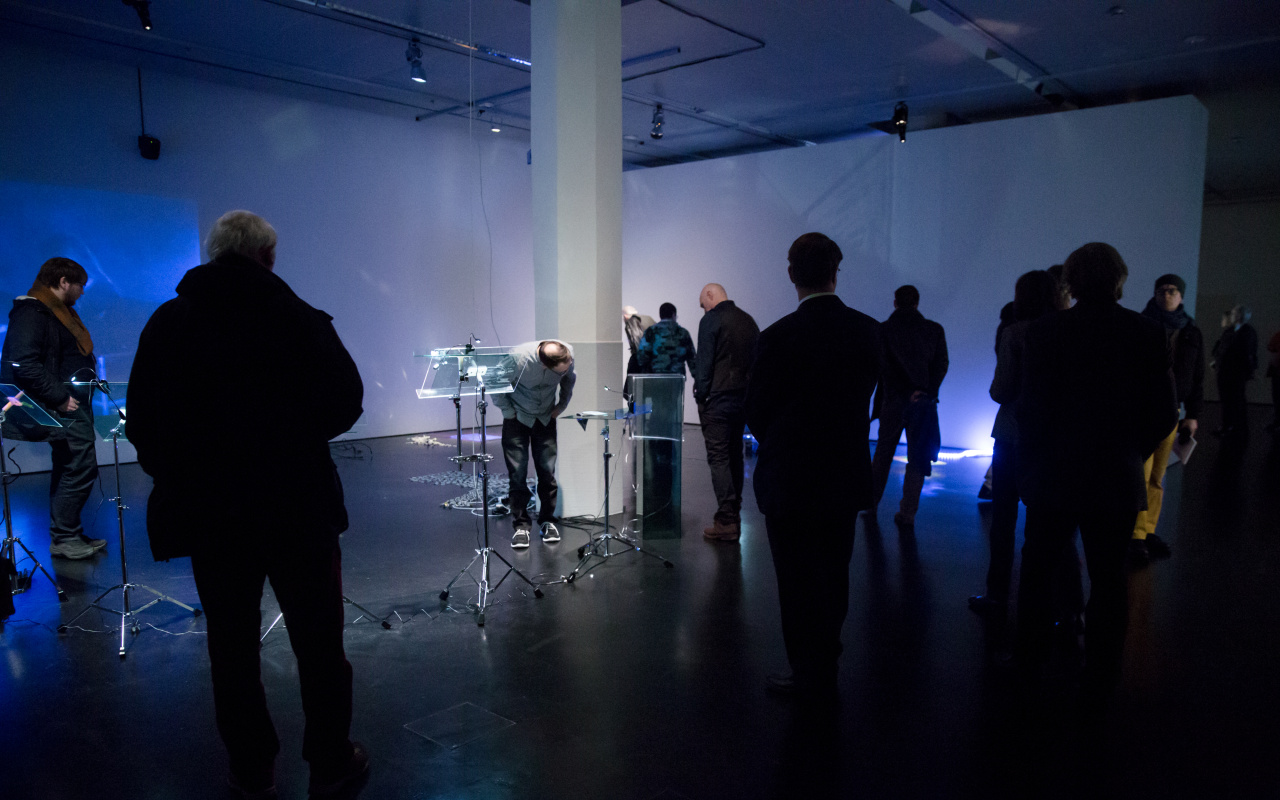Nile Koetting
The works of Nile Koetting share the continuing theme of "sensing"; using a diverse range of media, including Performance, sound, installation, and scientific materials. Derived from Koetting's experience as a stage performer, they constantly reflect ideas of theatrical structure. They evoke a new perspective, as well as a landscape of "being" in our civilization and environment. One of the most important achievements of Pierre Curie, the famous French scientist and husband of Marie Curie, was the discovery of the symmetry of crystalline structures and the piezoelectric effect. The piezoelectric effect of certain crystals was subsequently applied as the basic mechanism for sensors and Speakers. During World War II, Curie's discovery was put to effective use in numerous types of communications equipment.
Hard in Organics (2015–2016)
Niele Koetting's installation »Hard in Organics« uses crystals, video, and sound to reference relationships of ways to apprehend the body. Part of the installation is Koetting's video piece »Deep Signals« (2015), showing six women on their respective voyages of body exploration, at a radio station once operated by the former German Democratic Republic. Their actions probe a never-ending horizon extending outward from a central point, as opposed to moving back and forth in vertical flights between an upper, divine level and a Iower, animal one. The sound sculptures exhibited around the video – which include a piece applying electrified crystal, a sculpture made out of numerous pressure sensors, and a sheet of electrified tin foil printed with one of Pierre Curie's love letters to Marie – generate an entire soundscape that merges into the theatrical and musical space.The Italian philosopher Mario Perniola has stated: "Music, after all, is the sound generated from the movement of attraction of bodies be-come things. The distorted sounds constantly emanating from these mediums and the gravity of their bodies are attracting and mesmerizing something. What is body, and how can corporeality be translated into the language of other disciplines? And how can it resonate and generate "music"? »Hard in Organics« explores a new perspective on the relationship between "organic" versus "inorganic" and, by doing so, writes a new narrative of living and non-living beings.

